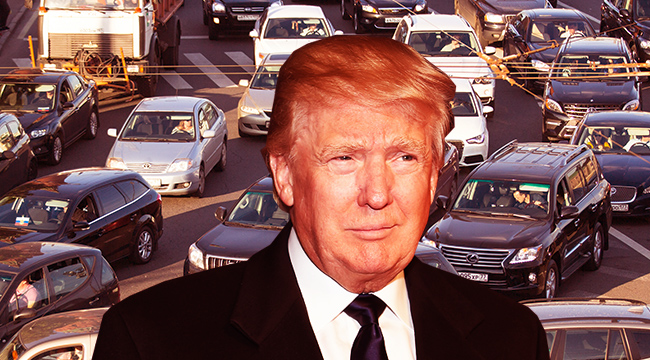
The auto industry is, to many, the crown jewel of American manufacturing. For Trump, it’s the foundation of his economic plan to bring back manufacturing jobs. But while Trump, and the industry, would like to believe that the circumstances that lead to the 2008 bailout that nearly saw two of Detroit’s Big Three cease to exist are a thing of the past, it appears the financial road ahead will be rough at best.
Last week, multiple alarms sounded across the auto industry that the recent good times, which saw seven straight years of increases capped by a record-breaking 2016, may be about to end. January and Feburary saw declines, and with March’s numbers, the news was even worse.
At issue are car loans. Americans currently hold $1.2 trillion in car loan debt, and credit bureau TransUnion reports delinquencies in auto loans have risen 21% over the last five years. TransUnion views this as simply the natural result of increased subprime auto lending, but that worries analysts as that’s a rapidly increasing (and also rapidly collapsing) section of the auto loan market.
Part of the problem is the housing crisis is being repeated, to some degree, in miniature. The same gold rush on consumer-loan backed securities that ultimately led to the 2008 crisis is reflected, to many, in the current financing models of how we buy cars. As the Fed begins to raise interest rates, Wall Street is becoming less willing to extend credit to automakers or their financial arms. That credit has been absolutely crucial to industry growth, as the average price of a new car has crept up to nearly $34,000.
Aggravating the problem is how Americans don’t seem interested in getting rid of their cars. Americans keep their cars on the road an average of nearly twelve years, at this point, which has helped drive down the price of used cars. Not helping matters is that there will be a used car glut in 2017, due to a number of leases expiring. In other words, the industry is faced with an excess of supply right when it appears demand is falling, and cheaper used cars, especially late model used cars with low mileage, will put enormous pressure on new car prices.
The result increasingly looks like a slowdown in manufacturing might be on the way, and that could hamper what Donald Trump has been striving toward. On the campaign trail and in the early days of his presidency, his statements relating to the auto industry have mostly been focused on the problem of jobs being shipped overseas, which he promised to bring back with economic strong-arm moves like tariffs and cuts to corporate tax rates. And there may still be help coming thanks to those things. But even if a housing bubble-styled bust isn’t imminent, even a relatively soft landing for the industry will still make it difficult to add and maintain substantial job growth.
Even if it was, March’s soft job numbers seem to indicate there aren’t any new jobs to be put out there, at the moment. Not helping matters is that auto sales account for up to twenty percent of consumer spending, meaning a drop in a key economic indicator may be coming for Trump.
Despite claims that he was handed a mess, Trump inherited a strong economy from Obama, and in truth, competent planning and strategy might yet ensure the auto industry has a soft landing. But if Trump was hoping an auto boom would guarantee prosperity, it’s clear that he’ll need to look elsewhere.
